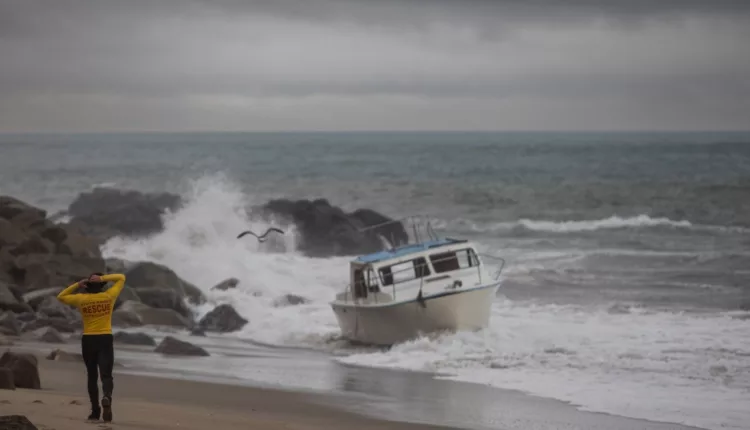
Massive Dangerous Waves Predicted for California Coast This Week
TL/DR –
The California coastline is expected to experience giant waves caused by Pacific storms across the West Coast, potentially leading to dangerous conditions at beaches from Thursday through the weekend. The waves could cause damage to piers, coastal flooding, and significant beach erosion, with breaking wave heights of up to 40 feet possible along Northern California’s coastline. The National Weather Service advised people to stay out of the water as the waves can easily overpower even the strongest swimmers, and a recent study found that California’s winter waves have grown bigger since 1970 due to climate change.
California to Experience Giant Waves due to Pacific Storms
California beaches are predicted to experience giant waves, stirred up by Pacific storms sweeping across the West Coast this week. Meteorologists caution that resulting from the “tremendous wave energy,” beaches will face perilous conditions from Thursday through the weekend. High surf warnings and advisories are in effect along the coast.
In some areas, the waves could be large enough to damage piers, cause coastal flooding, and result in significant beach erosion. Breaking wave heights could reach up to 40 feet along the Northern California coastline, with the peak swell expected near high tide late Thursday morning.
The National Weather Service for the Bay Area has advised people to stay out of and well away from the water, especially keeping a close eye on children and pets. Conditions have been described as deadly and can easily overpower the strongest swimmers.
Satellite data showed waves about 42 feet high in the open ocean far offshore on Wednesday, according to Alexis Clouser, a meteorologist with the Bay Area weather office in Monterey, Calif. She confirmed that while these are not the highest wave heights ever seen, they pose a serious threat due to their size and potential run-up.
Waves between 10 and 20 feet high, and up to 25 feet, could hit parts of central and Southern California coasts, potentially causing flooding in vulnerable low-lying areas, including beach parking lots and roads. West-facing beaches, from Point Conception in Santa Barbara County to La Jolla and Imperial beaches in San Diego County, face the greatest risk. Weather offices are advising people to stay out of the water due to the hazardous surf.
The National Weather Service in Oxnard, Calif., has warned of “EXTREMELY DANGEROUS conditions” as powerful waves and life-threatening rip currents pose an exceptional risk of ocean drowning and damage to coastal structures such as piers and jetties.
As it is the holiday season, there may be more visitors than usual at beaches this week. Tom Fisher, a meteorologist with the National Weather Service in Oxnard, warns the public to not underestimate the power of the waves.
High surf is an often fatal hazard during California winters. From November 2020 to February 2021, eight people, including children, died in the San Francisco Bay Area when they were swept out to sea by giant “sneaker waves.”
Such waves surge beyond the normal surf line and can easily overtake those unaware of the danger, pulling them into the cold, rough sea.
A recent study showed that California’s winter waves have grown larger since 1970 due to climate change, a result of increased storminess and an intensification of the wintertime low-pressure center near the Gulf of Alaska, known as the Aleutian Low.
This week’s massive swell is being propelled by winds sweeping across the Pacific Ocean, thanks to an area of strong low pressure off the West Coast. An active weather pattern is bringing a pair of storm systems and associated atmospheric rivers into the Pacific Northwest and California this week.
The wettest areas are expected to be at the California-Oregon border and along the Northern California coast, where over 4 inches of rain could fall through Saturday. The wet weather will extend into Southern California this weekend, possibly affecting the annual Rose Parade on New Year’s Day in Pasadena.
—
Read More US News
